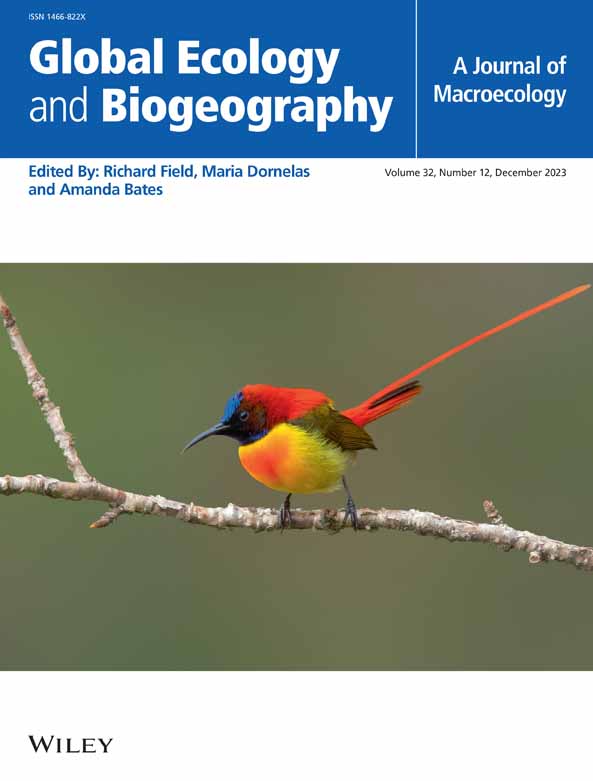Looks Can Be Deceiving: Morphological Traits Are Weakly Associated With the Isotopic Niches of Freshwater Fishes
Abstract
Aim
Fueled by the emergence of global-scale databases, fish morphological traits are now routinely used as a proxy for trophic ecology when estimating functional diversity. Yet, a rigorous empirical validation of trophic-morphology relationships is lacking. This study offers a global test of whether species' morphology is associated with a known indicator of trophic ecology, stable isotope ratios of carbon and nitrogen.
Location
Worldwide.
Time Period
1992–2023.
Major Taxa Studied
Freshwater fishes (Actinopterygii).
Methods
Isotope-morphology relationships were examined using δ13C and δ15N values from 811 fish communities and ten species-level morphological traits with direct relevance for foraging behaviour (body length, body shape, and position of the mouth, eyes and fins) for 1282 species. Associations were assessed with Multiple Regression on Distance Matrices and Multivariate Generalised Linear Models (MGLM). Analyses were repeated at the individual level for five fish species.
Results
Species morphological similarities explained, on average, 10% of the variation in stable isotope values for fish communities, with > 6% of the communities exhibiting statistically significant associations. The MGLM explained 53% of the variation in δ13C and 48% in δ15N, with approximately 97% and 77% of this variation, respectively, attributed to the site identity (random effect), not the morphological traits. Individual traits contributed minimally (each < 1% variation explained), except for oral gape length (8.3%) and maximum body length (4.7%). Herbivores had significantly weaker isotope-morphology correlations than omnivores and carnivores for δ15N, while no significant differences were observed for δ13C. At the individual level, morphology explained 0% to 16% of isotopic variation within populations, averaging 4%.
Main Conclusions
Weak isotope-morphology relationships for freshwater fishes may arise from the influence of a host of biological, environmental, or methodological factors, or may truly indicate a fundamental disconnection between morphological traits measured at the species level and the trophic niche of populations that are manifested in food webs. Ecologists should recognise the limitations of assuming morphological traits are ‘functional’ in the sense that they can offer a reasonable proxy of a species' trophic ecology at large scales.

 求助内容:
求助内容: 应助结果提醒方式:
应助结果提醒方式:


